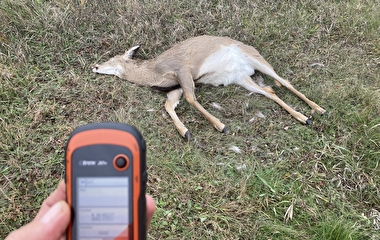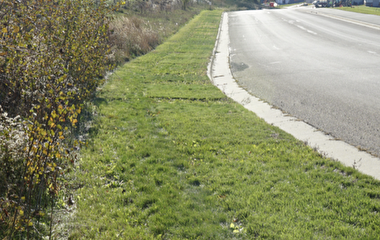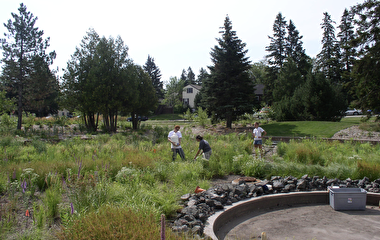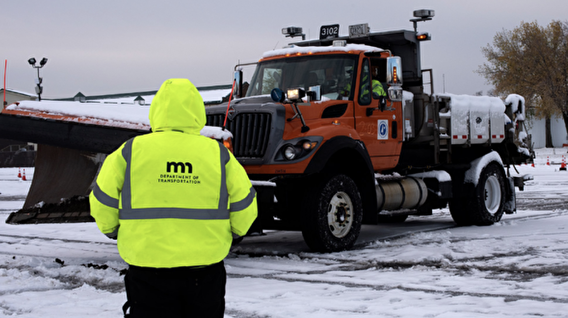
Keeping Minnesota’s roads safe and accessible during the winter comes with a hefty price tag: The Minnesota Department of Transportation (MnDOT) alone spends more than $2 million on diesel fuel each year for its snowplowing operations. Reducing the amount of money spent on fuel would not only lower the agency’s operating costs but also help it meet its sustainability goals, which include a 30 percent reduction in greenhouse gas emissions from 2005 levels by 2025.
In a recent MnDOT-sponsored project, U researchers harnessed data from MnDOT snowplows to provide insights into vehicle fuel economy. “Our team investigated the impact of snowplow idling and snowfall amounts on fuel consumption by mining and analyzing vehicle onboard diagnostic data,” says Will Northrop, a professor with the Department of Mechanical Engineering.
One of the biggest challenges of the project was the vast amount of data collected through the mobile data collection technology installed in hundreds of MnDOT snowplows. The high-fidelity data is collected in real time and includes each truck’s location, route, and speed; weather and road conditions; materials usage; and fuel rate. The data is integrated into the agency’s maintenance decision and support system (MDSS) and used to help manage winter maintenance operations.
Researchers began by analyzing snowplow idling—the times during which a snowplow remained motionless for three or more minutes. They processed more than 200,000 hours of data from 978 trucks over four winters to examine the frequency, length, and location of idling events; the data used included GPS coordinates, engine rpm, and fuel rates. In addition, they reviewed the relationship between snowplow activity—such as distance traveled, overall run time, and fuel consumption—and idling.
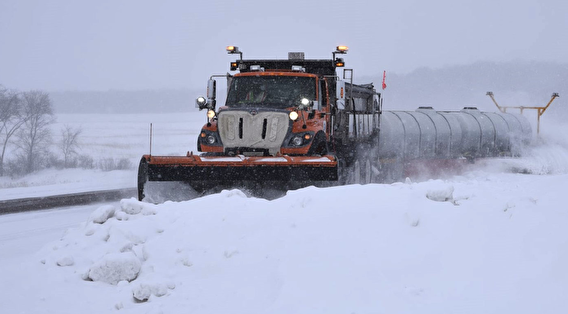
Next, the research team performed a comprehensive energy analysis to determine the impact of snowfall on fuel consumption. They used algorithms to analyze data from 41 plows alongside historical weather information from the 2020–21 winter season—for a total of 4,300 trips analyzed. The data they examined included vehicle make, model, and year; GPS position; and fuel rate. They also used velocity and elevation data to determine road resistance and the energy needed to propel a snowplow forward, because this also impacts fuel usage.
The results of these analyses provided important insights that will help MnDOT efficiently manage its snowplow fleet. According to the idling analysis, the idling time of the fleet was about one-quarter of the time the plows were active and accounted for 4.3 percent of the fuel used. Researchers also identified a clear correlation between snowfall and average fuel use—on days with four inches of snow or more, fuel use rose 25 percent compared to dry days.
“These results give MnDOT additional motivation for snow mitigation strategies,” Northrop says. “Snow fences, for example, don’t just reduce the need for plowing. They can improve snowplow fuel economy by minimizing the snow depth through which the plow drives.”
Moving forward, MnDOT is interested in integrating multiple data sources to help make snowplow operations more efficient and cost-effective. Agency leaders say this research will allow them to further leverage the data collection systems they have in place for fleet management.
“This project gave us confidence that we have the right technology and data to help analyze fuel-consumption hot spots, snow trap areas, and salt use,” says Joseph Huneke, transportation program supervisor with MnDOT’s Office of Maintenance and road weather technology lead. “The mobile data collection tools, when combined with other systems and technologies, can help in achieving our strategic goals.”
Based on their findings, researchers made two recommendations to help MnDOT reduce fuel usage. First, they suggest carrying out a cost-benefit analysis of using alternative technologies—such as direct-fire heaters or auxiliary power units—that could reduce the need for idling by heating the cab without running the engine. Second, they recommend continuing the idling analysis to build a framework for systematically addressing long periods of idling at truck stations and other locations.
—Megan Tsai, contributing writer
